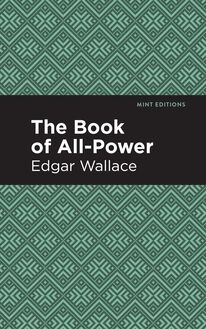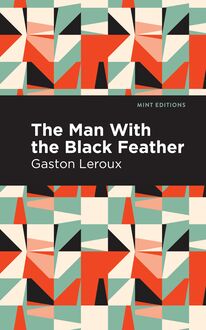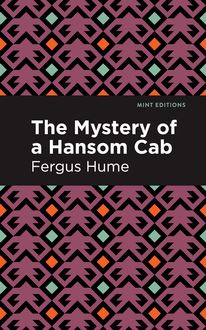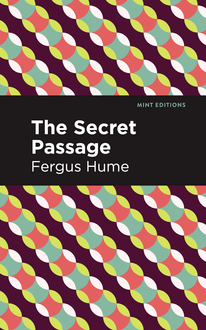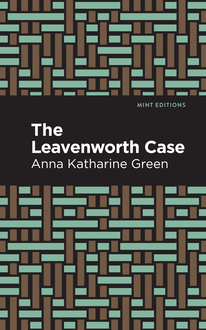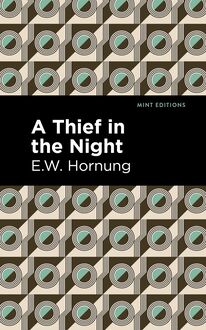-
 Univers
Univers
-
 Ebooks
Ebooks
-
 Livres audio
Livres audio
-
 Presse
Presse
-
 Podcasts
Podcasts
-
 BD
BD
-
 Documents
Documents
-
- Cours
- Révisions
- Ressources pédagogiques
- Sciences de l’éducation
- Manuels scolaires
- Langues
- Travaux de classe
- Annales de BEP
- Etudes supérieures
- Maternelle et primaire
- Fiches de lecture
- Orientation scolaire
- Méthodologie
- Corrigés de devoir
- Annales d’examens et concours
- Annales du bac
- Annales du brevet
- Rapports de stage
La lecture à portée de main
Vous pourrez modifier la taille du texte de cet ouvrage
Découvre YouScribe en t'inscrivant gratuitement
Je m'inscrisDécouvre YouScribe en t'inscrivant gratuitement
Je m'inscrisEn savoir plus
Vous pourrez modifier la taille du texte de cet ouvrage
En savoir plus

Description
“Holmes has taken on a life of his own in the hearts and minds of a modern world” -The Times
“Start a story by Conan Doyle and you cannot stop reading, whether you are ten or sixty.”-Michael Dirda
“The immense talent, passion and literary brilliance that Conan Doyle brought to his work gives him a unique place in English letters.”-Stephen Fry
Arthur Conan Doyle’s The Valley of Fear (1915) is the fourth and final installment of the Sherlock Holmes crime novels. This work of riveting suspense and intrigue is loosely based on the infamous 18th Century Irish secret society, The Molly Maguires. First published in serial form in The Strand Magazine in 1914 and 1915, this novel brings Sherlock Holmes face-to-face with the evil Professor Moriarty, one of the most nefarious characters of crime fiction.
The Valley of Fear, much like the first Sherlock Holmes novel (A Study in Scarlet) is told in two parts; the first is the bewildering mystery of a murder at a remote English estate, and the second section is told by the man initially thought to be the murder victim, set in the Midwest of the United States. When Sherlock Holmes receives a cipher message at Baker Street, he quickly deciphers its message- that John Douglas, the resident of a remote estate in Sussex is in danger. Soon after decoding the letter Holmes is visited by a policeman and friend who informs him that Douglas has been murdered at Birlstone, the estate. When Holmes and Watson arrive at the scene they are met with a bewildering array of clues, including a disfigured body, bloody footprints, and a missing dumb-bell. When the house servants are interrogated it becomes clear that there is a conspiracy that extends to a secret society called The Freeman, in a Western coal mining town in the United States. The second part of the book moves to the story of the mafia-like gang in the wild west, and ultimately to Holmes’s nemesis, the infamous Professor Moriarty.
With an eye-catching new cover, and professionally typeset manuscript, this edition of The Valley of Fear is both modern and readable.
Sujets
Informations
| Publié par | Mint Editions |
| Date de parution | 01 décembre 2020 |
| Nombre de lectures | 0 |
| EAN13 | 9781513272399 |
| Langue | English |
| Poids de l'ouvrage | 4 Mo |
Informations légales : prix de location à la page 0,0450€. Cette information est donnée uniquement à titre indicatif conformément à la législation en vigueur.
Extrait
The Valley of Fear
Sir Arthur Conan Doyle
The Valley of Fear was first published in 1915.
This edition published by Mint Editions 2020.
ISBN 9781513267395 | E-ISBN 9781513272399
Published by Mint Editions®
minteditionbooks.com
Publishing Director: Jennifer Newens
Design & Production: Rachel Lopez Metzger
Typesetting: Westchester Publishing Services
C ONTENTS P ART I. T HE T RAGEDY OF B IRLSTONE I. T HE W ARNING II. S HERLOCK H OLMES D ISCOURSES III. T HE T RAGEDY OF B IRLSTONE IV. D ARKNESS V. T HE P EOPLE OF THE D RAMA VI. A D AWNING L IGHT VII. T HE S OLUTION P ART II. T HE S COWRERS I. T HE M AN II. T HE B ODYMASTER III. L ODGE 341, V ERMISSA IV. T HE V ALLEY OF F EAR V. T HE D ARKEST H OUR VI. D ANGER VII. T HE T RAPPING OF B IRDY E DWARDS E PILOGUE
PART I
THE TRAGEDY OF BIRLSTONE
I
T HE W ARNING
“ I am inclined to think—” said I.
“I should do so,” Sherlock Holmes remarked impatiently.
I believe that I am one of the most long-suffering of mortals; but I’ll admit that I was annoyed at the sardonic interruption. “Really, Holmes,” said I severely, “you are a little trying at times.”
He was too much absorbed with his own thoughts to give any immediate answer to my remonstrance. He leaned upon his hand, with his untasted breakfast before him, and he stared at the slip of paper which he had just drawn from its envelope. Then he took the envelope itself, held it up to the light, and very carefully studied both the exterior and the flap.
“It is Porlock’s writing,” said he thoughtfully. “I can hardly doubt that it is Porlock’s writing, though I have seen it only twice before. The Greek e with the peculiar top flourish is distinctive. But if it is Porlock, then it must be something of the very first importance.”
He was speaking to himself rather than to me; but my vexation disappeared in the interest which the words awakened.
“Who then is Porlock?” I asked.
“Porlock, Watson, is a nom-de-plume, a mere identification mark; but behind it lies a shifty and evasive personality. In a former letter he frankly informed me that the name was not his own, and defied me ever to trace him among the teeming millions of this great city. Porlock is important, not for himself, but for the great man with whom he is in touch. Picture to yourself the pilot fish with the shark, the jackal with the lion—anything that is insignificant in companionship with what is formidable: not only formidable, Watson, but sinister—in the highest degree sinister. That is where he comes within my purview. You have heard me speak of Professor Moriarty?”
“The famous scientific criminal, as famous among crooks as—”
“My blushes, Watson!” Holmes murmured in a deprecating voice.
“I was about to say, as he is unknown to the public.”
“A touch! A distinct touch!” cried Holmes. “You are developing a certain unexpected vein of pawky humour, Watson, against which I must learn to guard myself. But in calling Moriarty a criminal you are uttering libel in the eyes of the law—and there lie the glory and the wonder of it! The greatest schemer of all time, the organizer of every deviltry, the controlling brain of the underworld, a brain which might have made or marred the destiny of nations—that’s the man! But so aloof is he from general suspicion, so immune from criticism, so admirable in his management and self-effacement, that for those very words that you have uttered he could hale you to a court and emerge with your year’s pension as a solatium for his wounded character. Is he not the celebrated author of The Dynamics of an Asteroid, a book which ascends to such rarefied heights of pure mathematics that it is said that there was no man in the scientific press capable of criticizing it? Is this a man to traduce? Foul-mouthed doctor and slandered professor—such would be your respective roles! That’s genius, Watson. But if I am spared by lesser men, our day will surely come.”
“May I be there to see!” I exclaimed devoutly. “But you were speaking of this man Porlock.”
“Ah, yes—the so-called Porlock is a link in the chain some little way from its great attachment. Porlock is not quite a sound link—between ourselves. He is the only flaw in that chain so far as I have been able to test it.”
“But no chain is stronger than its weakest link.”
“Exactly, my dear Watson! Hence the extreme importance of Porlock. Led on by some rudimentary aspirations towards right, and encouraged by the judicious stimulation of an occasional ten-pound note sent to him by devious methods, he has once or twice given me advance information which has been of value—that highest value which anticipates and prevents rather than avenges crime. I cannot doubt that, if we had the cipher, we should find that this communication is of the nature that I indicate.”
Again Holmes flattened out the paper upon his unused plate. I rose and, leaning over him, stared down at the curious inscription, which ran as follows:
534 C2 13 127 36 31 4 17 21 41 D OUGLAS 109 293 5 37 B IRLSTONE 26 B IRLSTONE 9 47 171
“What do you make of it, Holmes?”
“It is obviously an attempt to convey secret information.”
“But what is the use of a cipher message without the cipher?”
“In this instance, none at all.”
“Why do you say ‘in this instance’?”
“Because there are many ciphers which I would read as easily as I do the apocrypha of the agony column: such crude devices amuse the intelligence without fatiguing it. But this is different. It is clearly a reference to the words in a page of some book. Until I am told which page and which book I am powerless.”
“But why ‘Douglas’ and ‘Birlstone’?”
“Clearly because those are words which were not contained in the page in question.”
“Then why has he not indicated the book?”
“Your native shrewdness, my dear Watson, that innate cunning which is the delight of your friends, would surely prevent you from inclosing cipher and message in the same envelope. Should it miscarry, you are undone. As it is, both have to go wrong before any harm comes from it. Our second post is now overdue, and I shall be surprised if it does not bring us either a further letter of explanation, or, as is more probable, the very volume to which these figures refer.”
Holmes’s calculation was fulfilled within a very few minutes by the appearance of Billy, the page, with the very letter which we were expecting.
“The same writing,” remarked Holmes, as he opened the envelope, “and actually signed,” he added in an exultant voice as he unfolded the epistle. “Come, we are getting on, Watson.” His brow clouded, however, as he glanced over the contents.
“Dear me, this is very disappointing! I fear, Watson, that all our expectations come to nothing. I trust that the man Porlock will come to no harm.
D EAR M R. H OLMES, he says:
“I will go no further in this matter. It is too dangerous—he suspects me. I can see that he suspects me. He came to me quite unexpectedly after I had actually addressed this envelope with the intention of sending you the key to the cipher. I was able to cover it up. If he had seen it, it would have gone hard with me. But I read suspicion in his eyes. Please burn the cipher message, which can now be of no use to you.
F RED P ORLOCK .
Holmes sat for some little time twisting this letter between his fingers, and frowning, as he stared into the fire.
“After all,” he said at last, “there may be nothing in it. It may be only his guilty conscience. Knowing himself to be a traitor, he may have read the accusation in the other’s eyes.”
“The other being, I presume, Professor Moriarty.”
“No less! When any of that party talk about ‘He’ you know whom they mean. There is one predominant ‘He’ for all of them.”
“But what can he do?”
“Hum! That’s a large question. When you have one of the first brains of Europe up against you, and all the powers of darkness at his back, there are infinite possibilities. Anyhow, Friend Porlock is evidently scared out of his senses—kindly compare the writing in the note to that upon its envelope; which was done, he tells us, before this ill-omened visit. The one is clear and firm. The other hardly legible.”
“Why did he write at all? Why did he not simply drop it?”
“Because he feared I would make some inquiry after him in that case, and possibly bring trouble on him.”
“No doubt,” said I. “Of course.” I had picked up the original cipher message and was bending my brows over it. “It’s pretty maddening to think that an important secret may lie here on this slip of paper, and that it is beyond human power to penetrate it.”
Sherlock Holmes had pushed away his untasted breakfast and lit the unsavoury pipe which was the companion of his deepest meditations. “I wonder!” said he, leaning back and staring at the ceiling. “Perhaps there are points which have escaped your Machiavellian intellect. Let us consider the problem in the light of pure reason. This man’s reference is to a book. That is our point of departure.”
“A somewhat vague one.”
“Let us see then if we can narrow it down. As I focus my mind upon it, it seems rather less impenetrable. What indications have we as to this book?”
“None.”
“Well, well, it is surely not quite so bad as that. The cipher message begins with a large 534, does it not? We may take it as a working hypothesis that 534 is the particular page to which the cipher refers. So our book has already become a L ARGE book, which is surely something gained. What other indications have we as to the nature of this large book? The next sign is C2. What do you make of that, Watson?”
“Chapter the second, no doubt.”
“Hardly that, Watson. You will, I am sure, agree with me that if the page be given, the number of the chapter is immaterial. Also that if page 534 finds us only in the second chapter, the length of the first one must have been really intolerable.”
“Column!” I cried.
“Brilliant, Watson. You are scintillating this morning. If it is not column, then I am very much deceived. So now, you see, we beg
-
 Univers
Univers
-
 Ebooks
Ebooks
-
 Livres audio
Livres audio
-
 Presse
Presse
-
 Podcasts
Podcasts
-
 BD
BD
-
 Documents
Documents
-
Jeunesse
-
Littérature
-
Ressources professionnelles
-
Santé et bien-être
-
Savoirs
-
Education
-
Loisirs et hobbies
-
Art, musique et cinéma
-
Actualité et débat de société
-
Jeunesse
-
Littérature
-
Ressources professionnelles
-
Santé et bien-être
-
Savoirs
-
Education
-
Art, musique et cinéma
-
Actualité et débat de société
-
Actualités
-
Lifestyle
-
Presse jeunesse
-
Presse professionnelle
-
Pratique
-
Presse sportive
-
Presse internationale
-
Culture & Médias
-
Action et Aventures
-
Science-fiction et Fantasy
-
Société
-
Jeunesse
-
Littérature
-
Ressources professionnelles
-
Santé et bien-être
-
Savoirs
-
Education
-
Loisirs et hobbies
-
Art, musique et cinéma
-
Actualité et débat de société
- Cours
- Révisions
- Ressources pédagogiques
- Sciences de l’éducation
- Manuels scolaires
- Langues
- Travaux de classe
- Annales de BEP
- Etudes supérieures
- Maternelle et primaire
- Fiches de lecture
- Orientation scolaire
- Méthodologie
- Corrigés de devoir
- Annales d’examens et concours
- Annales du bac
- Annales du brevet
- Rapports de stage




